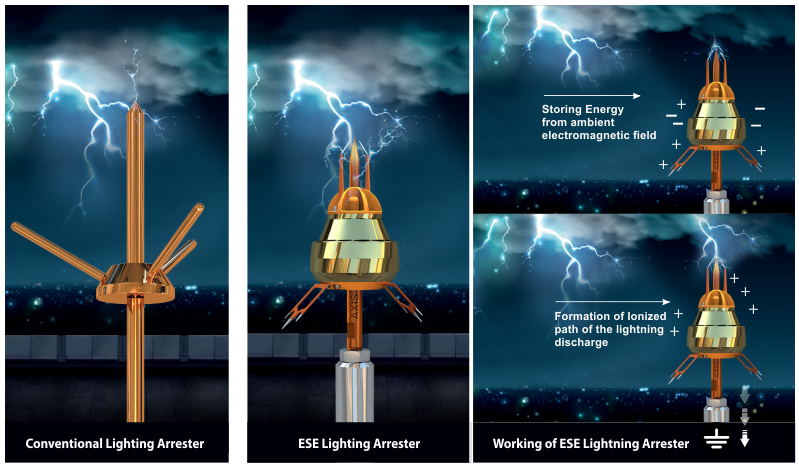Follow us on LinkedIn for regular updates on everything about Lightning Arresters!
Well, we all are aware of the lightning strike that occurs during the rainy season. But are we aware of the fact that we need to protect our structure and electrical system from it too? Yes, there is a device called a lightning arrester. There are different types of lightning arresters, they protect our structure & electrical systems from getting affected by lightning. In this article, we will discuss the difference between Conventional and ESE Lightning Arresters. Let’s start off by discussing the working principle of lightning arresters.


Basics of the Lightning Arrester
A lightning bolt generates a voltage surge. And it directly hits on any facility or electrical service. The wiring or the electrical systems of the facility may get damaged due to the voltage surge.
Hence to protect the structure and electrical systems, the lightning arresters are used.
The lightning arrester defends the power system by forwarding this high voltage surges to the ground. The lightning arrestor provides the low impedance path when the traveling wave of lightning reaches a certain level and gets grounded without affecting the structure. For more info on lightning arresters, feel free to read this blog on “Why do we need Lightning Arresters?” Now, we will discuss the clear difference between the conventional lightning arrester and ESE lightning arrester by understanding their working.
Free Book on ESE Lightning Arrester


Types of Lightning Arrester – Conventional
The conventional lightning arrester consists of Franklin rods. Their effectiveness is decided based on their position, morphology, materials used, and physical reaction that is performed due to the electrostatic field during the lightning.
The lightning arrester is placed at a dominant height, making it a favourable point for the lightning bolt to strike. Through the grounding system, the positive charge rises to the tip of the lightning rod. And when the lightning strikes, the device allows the lightning leader from the cloud and grounds it safely through the installed grounding system. Hence the current discharge gets distributed evenly throughout the ground and thus protects the structure.

